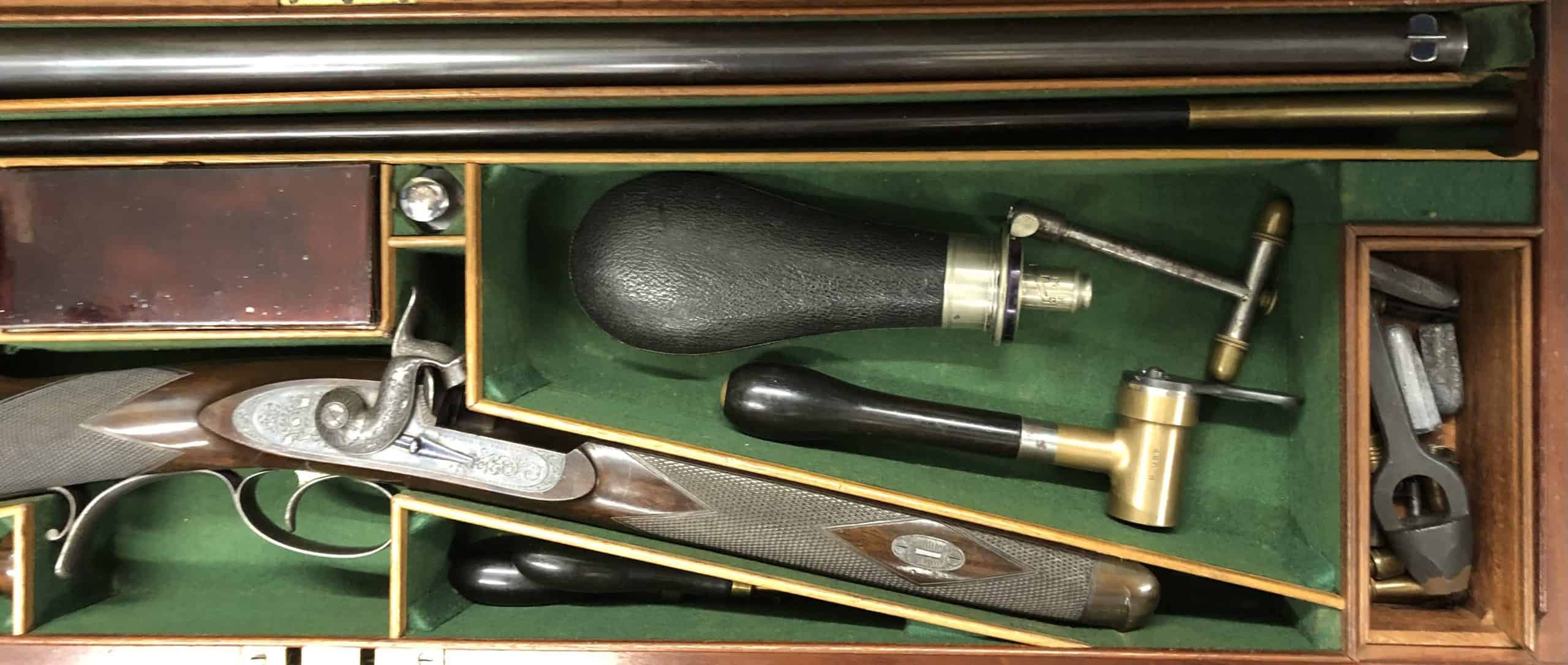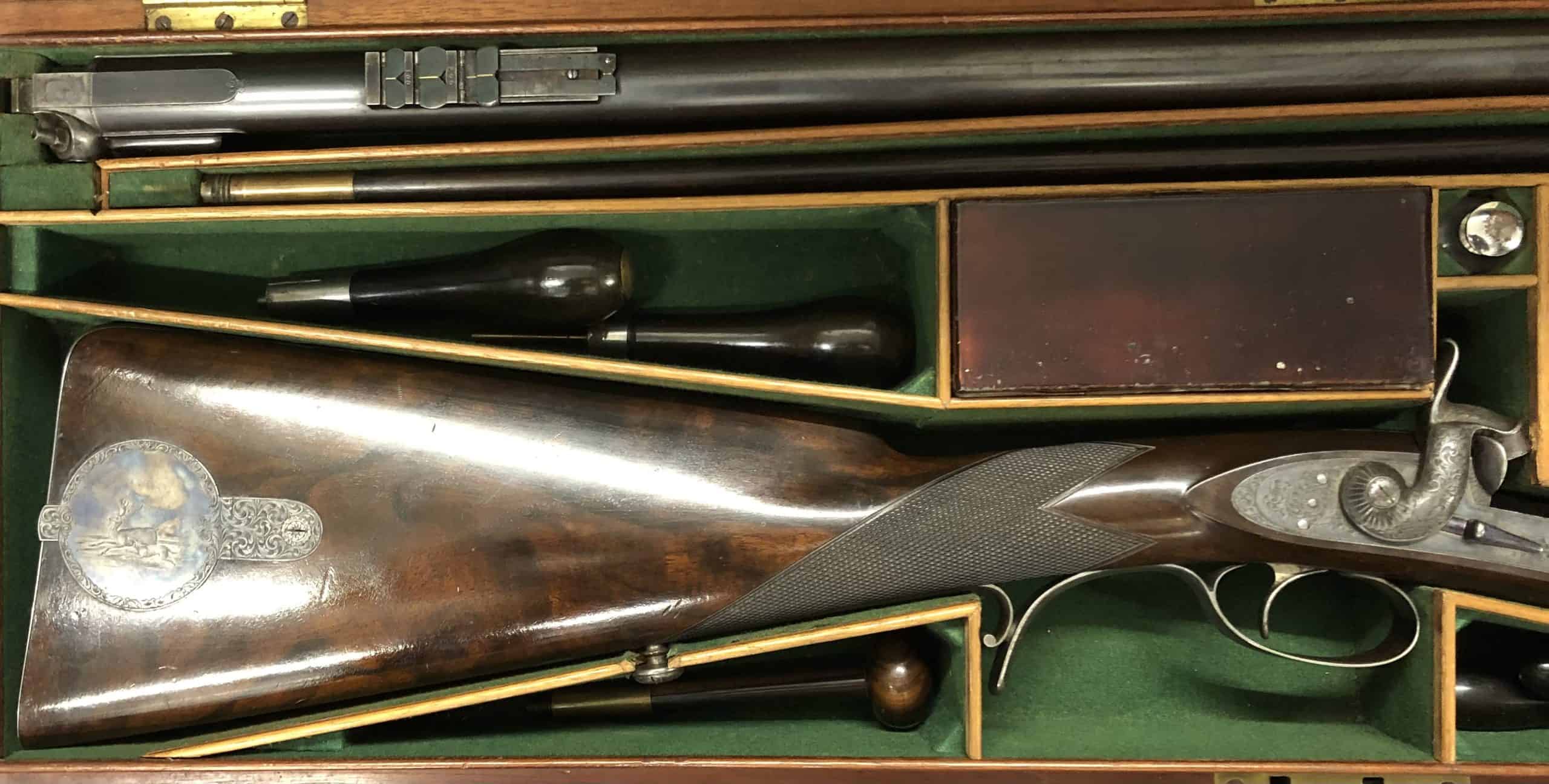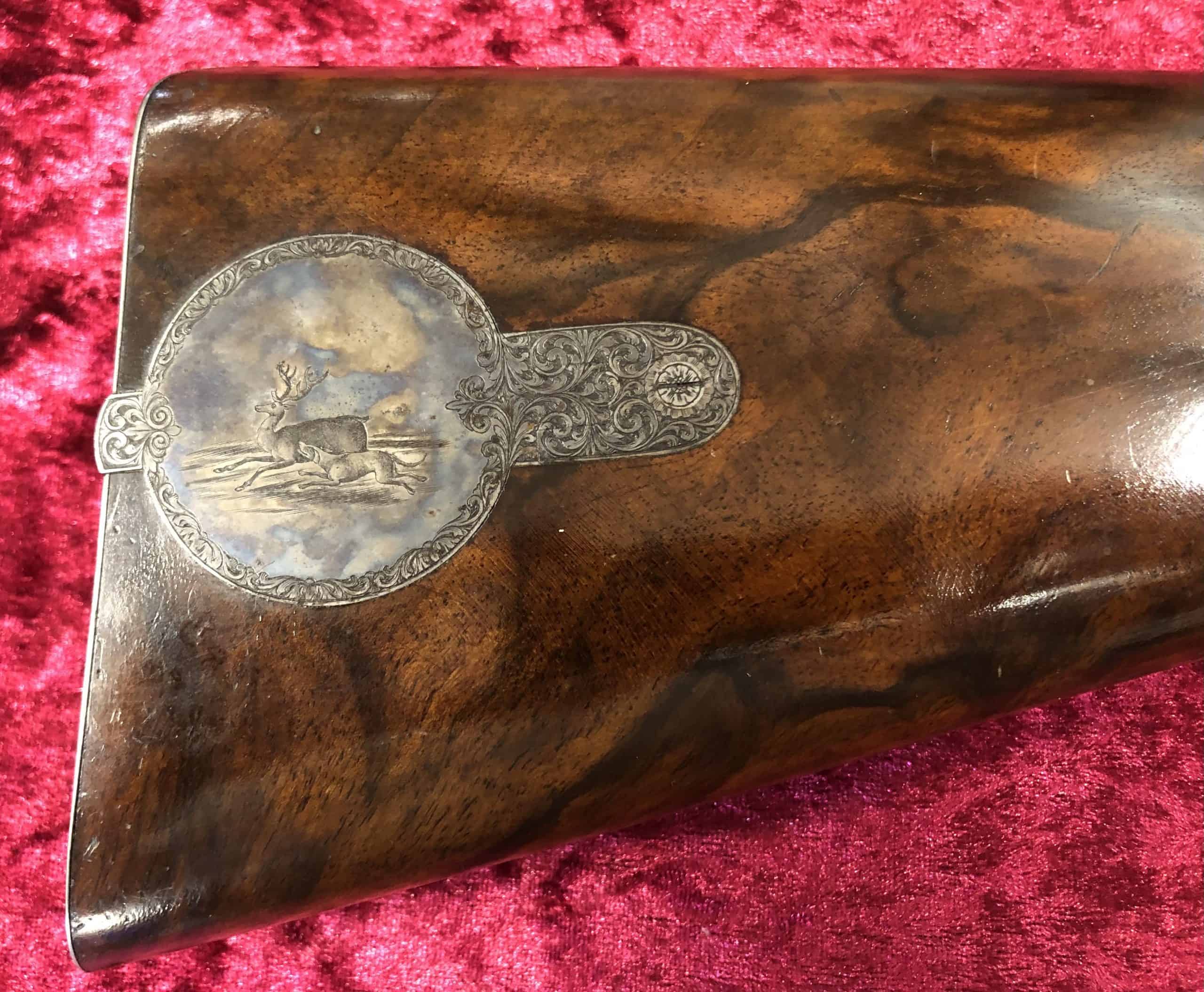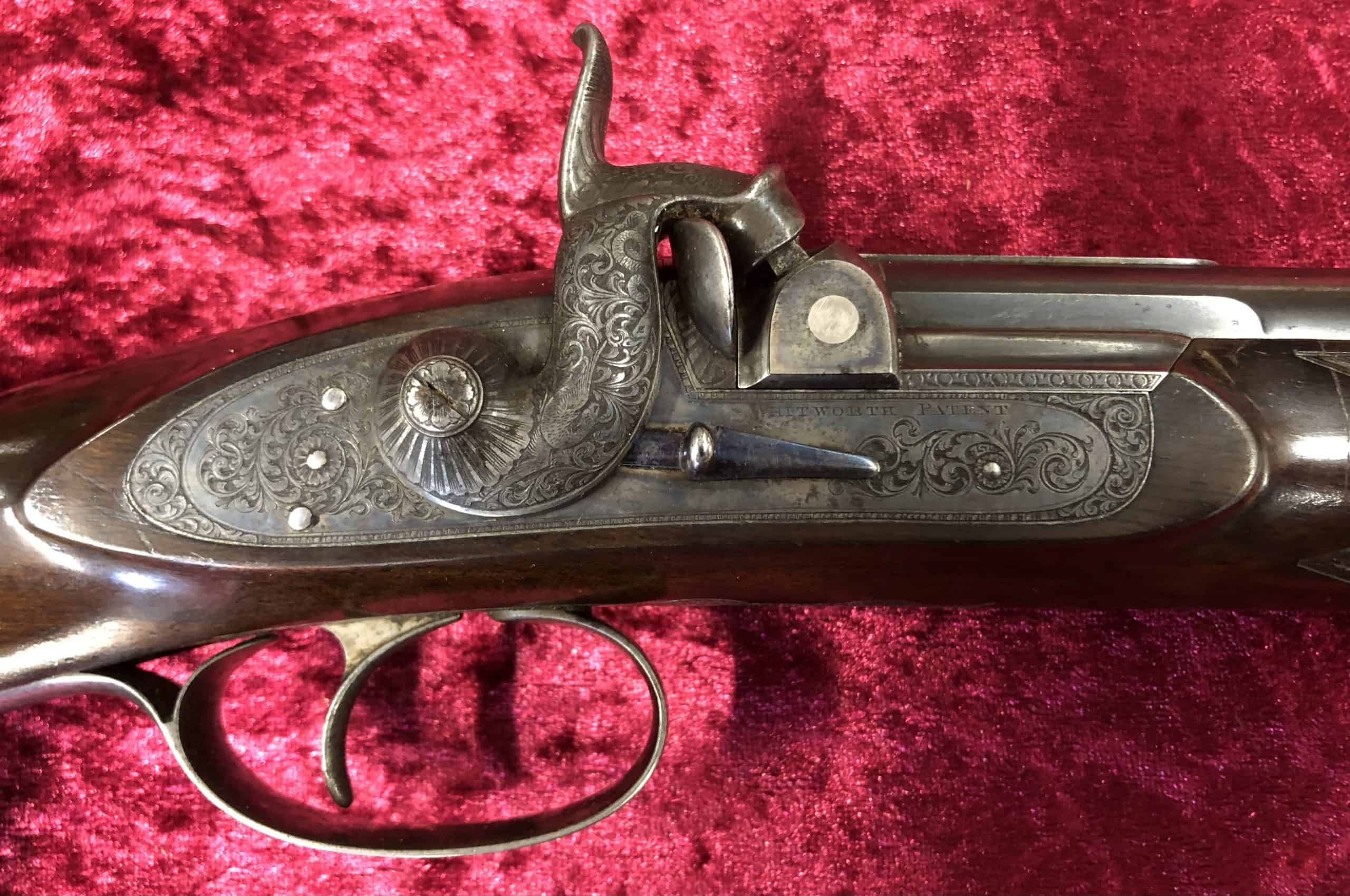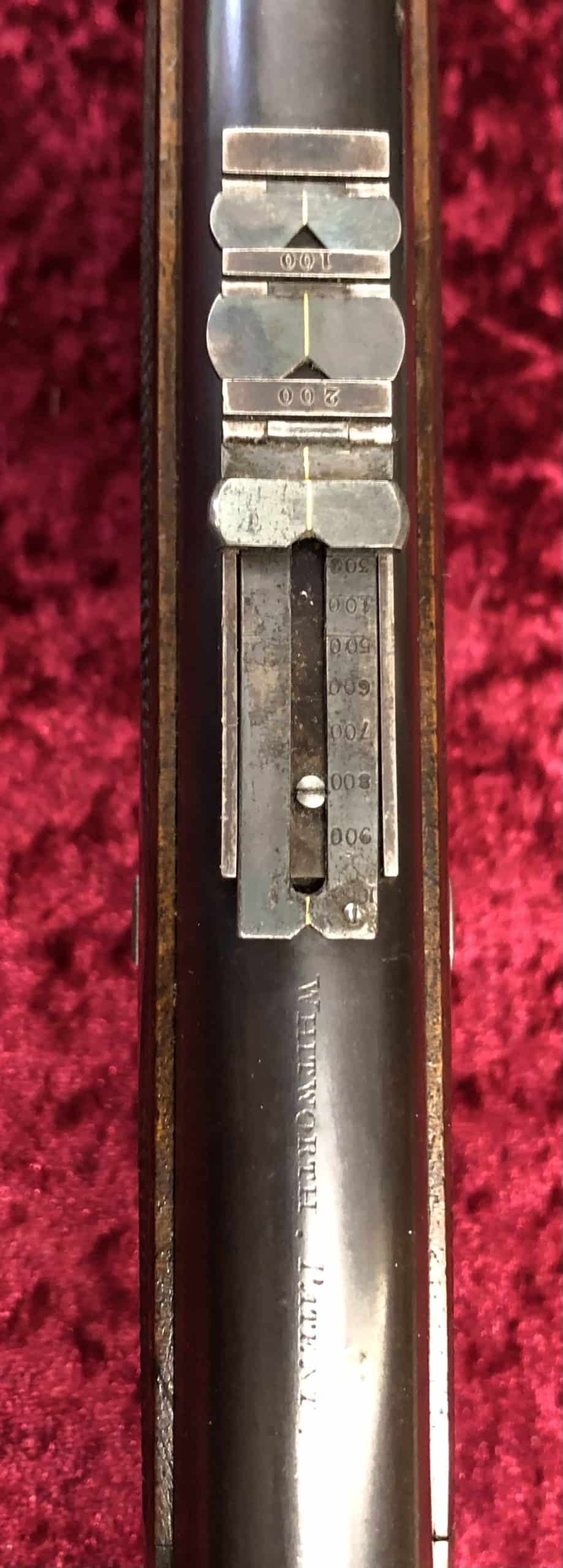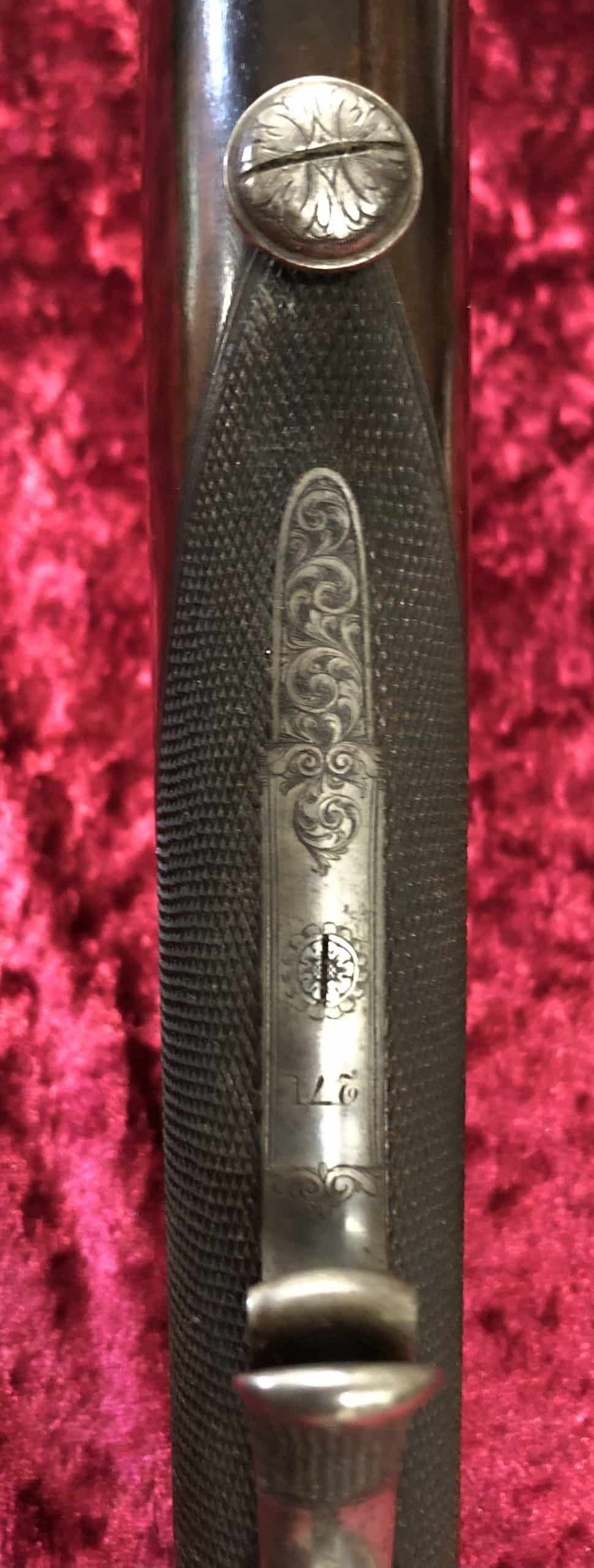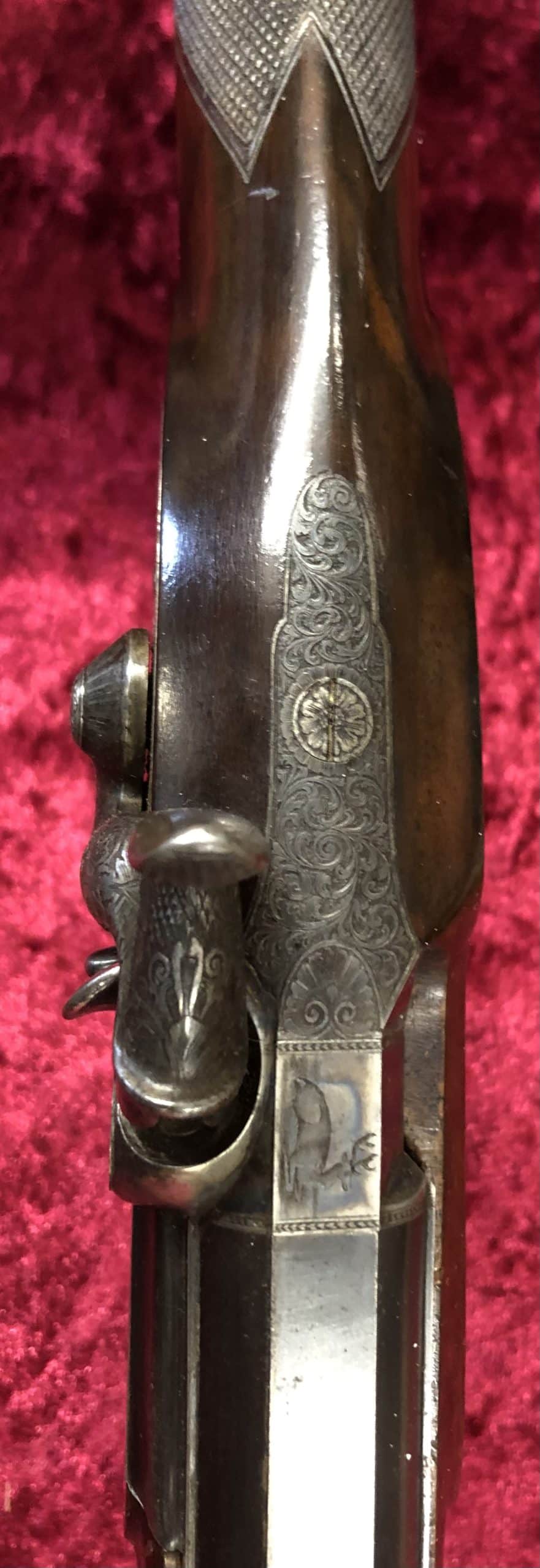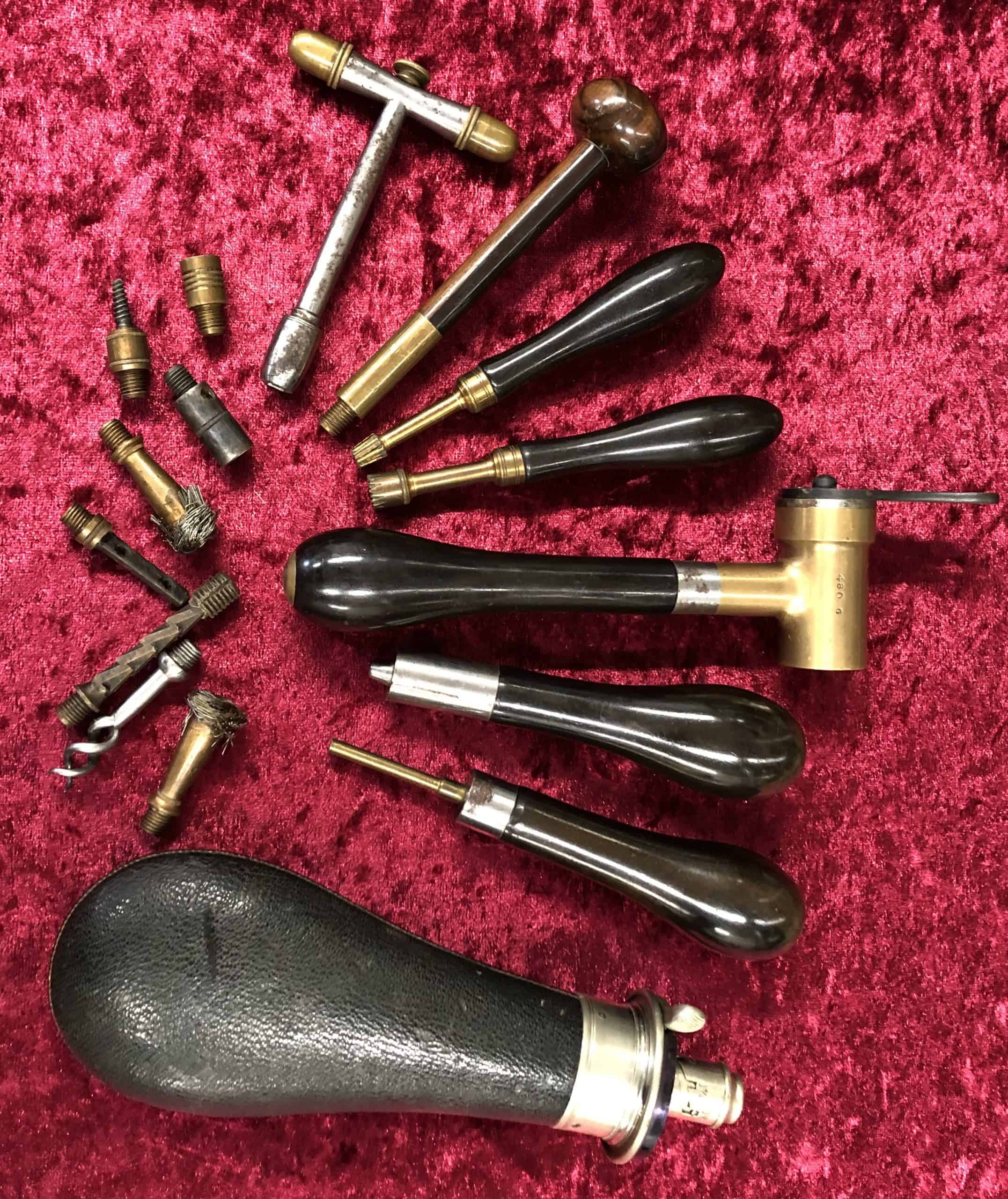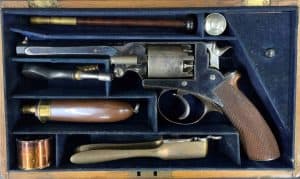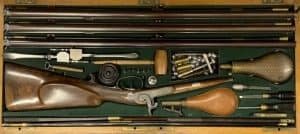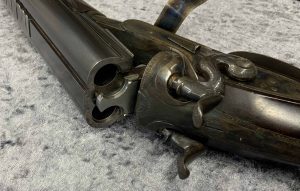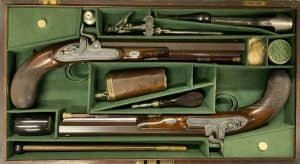Description
Cased .450 (52-Bore) Whitworth Patent Sporting & Target Rifle
With blued barrel and engraved “Whitworth Patent” along the top in front of the back-sights, the latter comprising two folding leaf sights for 100 & 200 yards respectively and each with central gold line, and folding adjustable long range sight calibrated from 300 to 1000 yards and also with central gold line, blued fore-sight, breech flat engraved with foliage at the terminal, border engraved case-hardened breech decorated with a prone stag on the flat and with platinum plug, bborder engraved case-hardened tang decorated with scrolling foliage, case-hardened border engraved flat detented lock engraved “Whitworth Patent” and decorated with foliate scrollwork, hammer en-suite and inhabited by an eagle and serpent, a blued safety catch in front, highly figured half-stock (minor scratches on the side flat) with chequered grip and forend, the latter with dark horn cap, border engraved case-hardened steel mounts decorated with scrolling foliage and comprising butt-plate with pineapple-shaped finial, circular hinged patch-box cover engraved with a stag pursued by a hound in a landscape within a border of scrollwork, vacant silver escutcheon, engraved sling button, and retaining virtually all it’s original finish: In original lined and fitted mahogany case retaining the compartment covers each with bone knob, and with accessories including G. & J.W. Hawksley powder-flask with bag-shaped body covered in black pigskin, Whitworth bullet mould and hand tools, T-shaped combination tool with spare nipples, brass mounted ramrod and japanned ammunition box, the interior of the lid with maker’s trade label, the exterior with vacant circular brass escutcheon. Birmingham proof marks. 29 ¼“ barrel.
A rare and superb cased set for the Whitworth enthusiast
Armaments
The Crimean war broke out in 1853 and despite being a pacifist Sir Joseph Whitworth turned his attention to the production of armaments. He believed firmly in the deterrent principle of defence. The Army Ordinance Board approached Sir Joseph Whitworth in 1854 and asked him to design and build machine tools for the mass production of their standard issue, Enfield Rifle. He carried out exhaustive test in his home grounds at the expense of the government and 20 patents relating to arms production were issued to Sir Joseph Whitworth between 1854 and 1878. Dissatisfied with the performance of the Enfield Rifle, he produced his own famous Whitworth Rifle, which used a smaller, more efficient hexagonal bore. The Times reported in 1857 on the official tests that “The Whitworth Rifle excelled the Enfield to a degree which hardly leaves room for comparison”.
Despite its apparent superiority, in 1859 the Whitworth Rifle was rejected by the Ordinance Board because of its small-bore size. His rifle was however used by the Rifle Brigade and large orders were received from the French Government. The Ordinance Board later accepted the Martini-Henry rifle, which had used Sir Joseph Whitworth’s basic principles, and they concluded, to his dissatisfaction, that the smaller bore size was in fact suitable for a military weapon. In 1862 Sir Joseph Whitworth developed a powerful cannon and a bitter dispute began with the Ordinance Board, when this was also rejected because it was not of the traditional design. The cannon was however supplied to France, New Zealand and other foreign governments.

